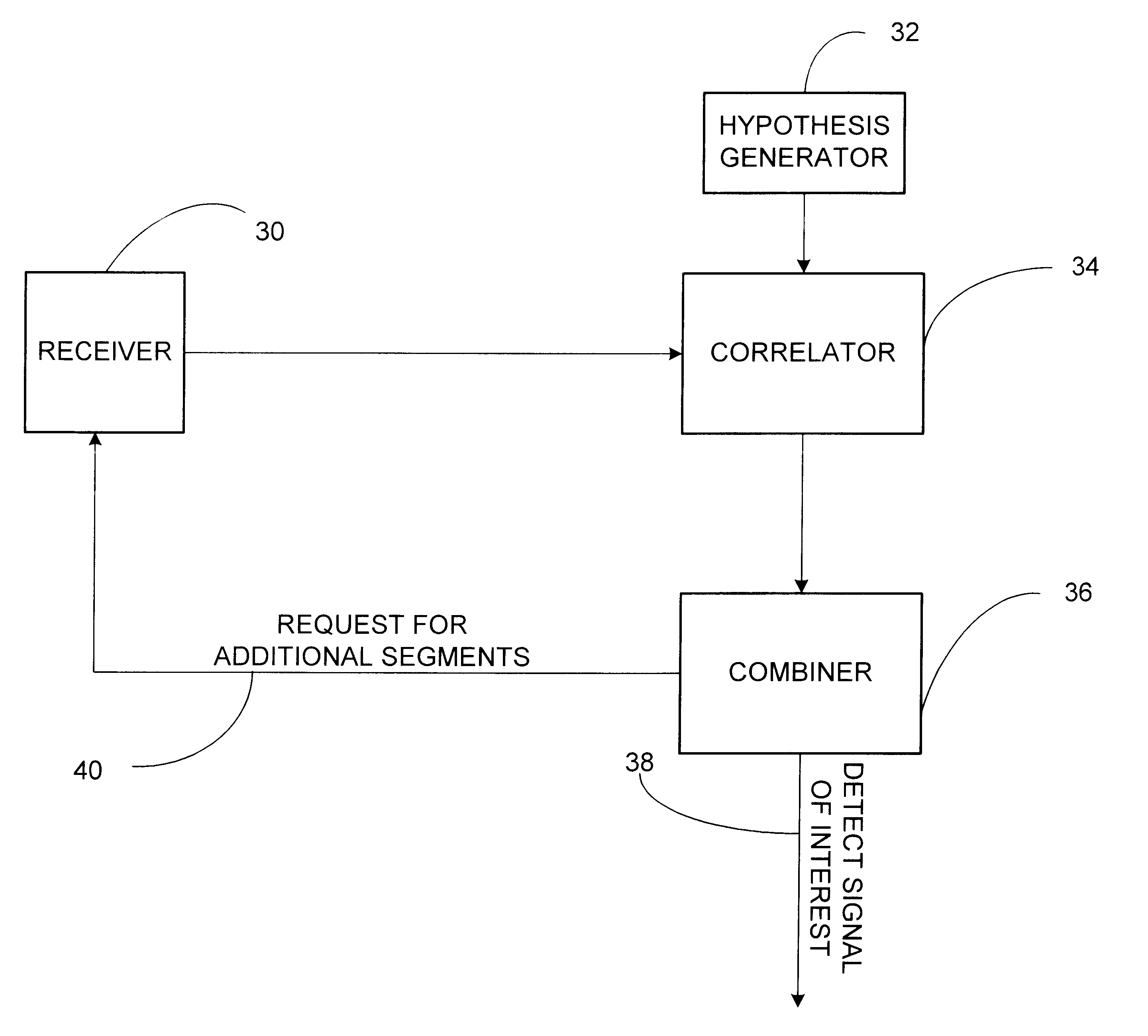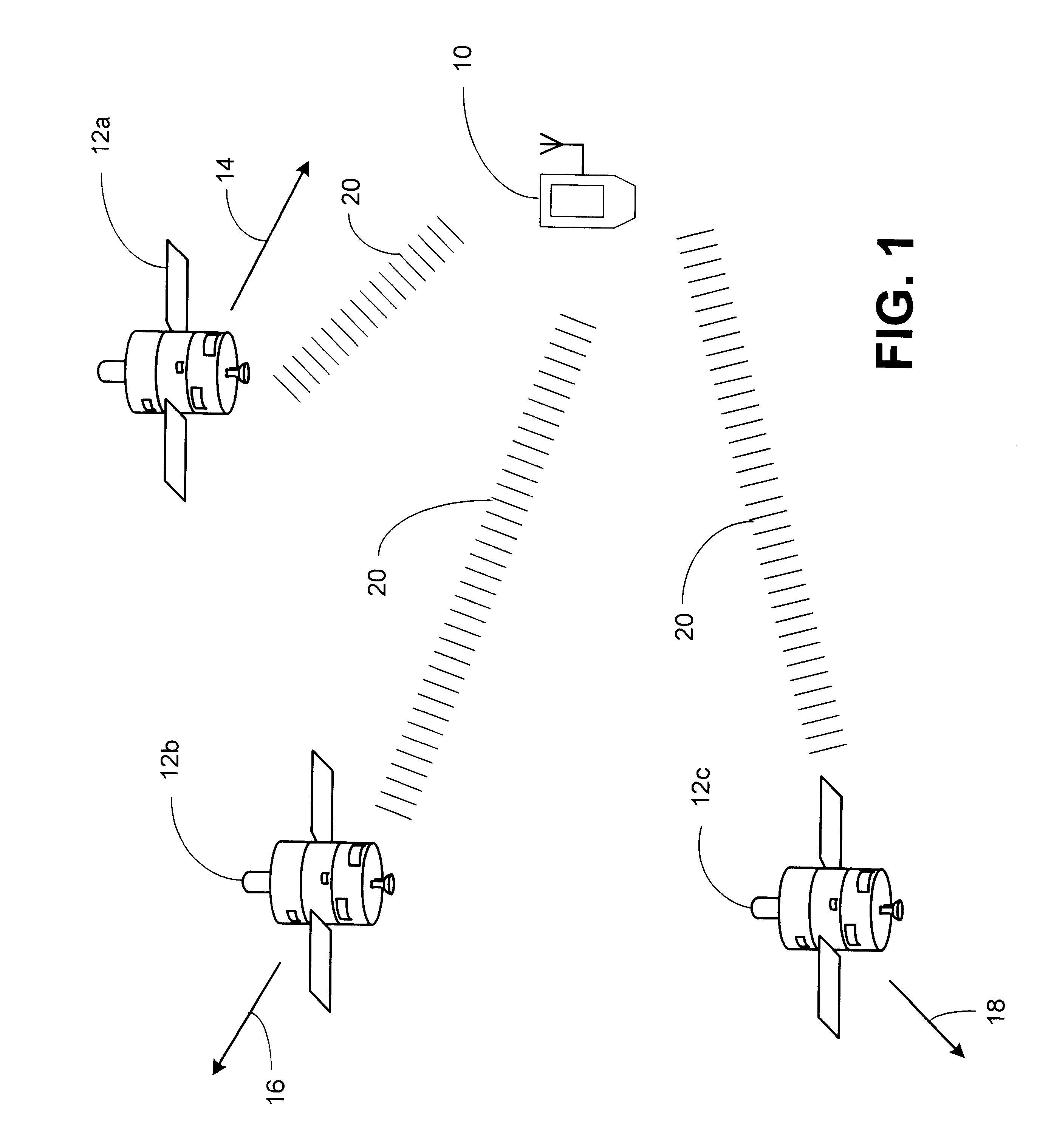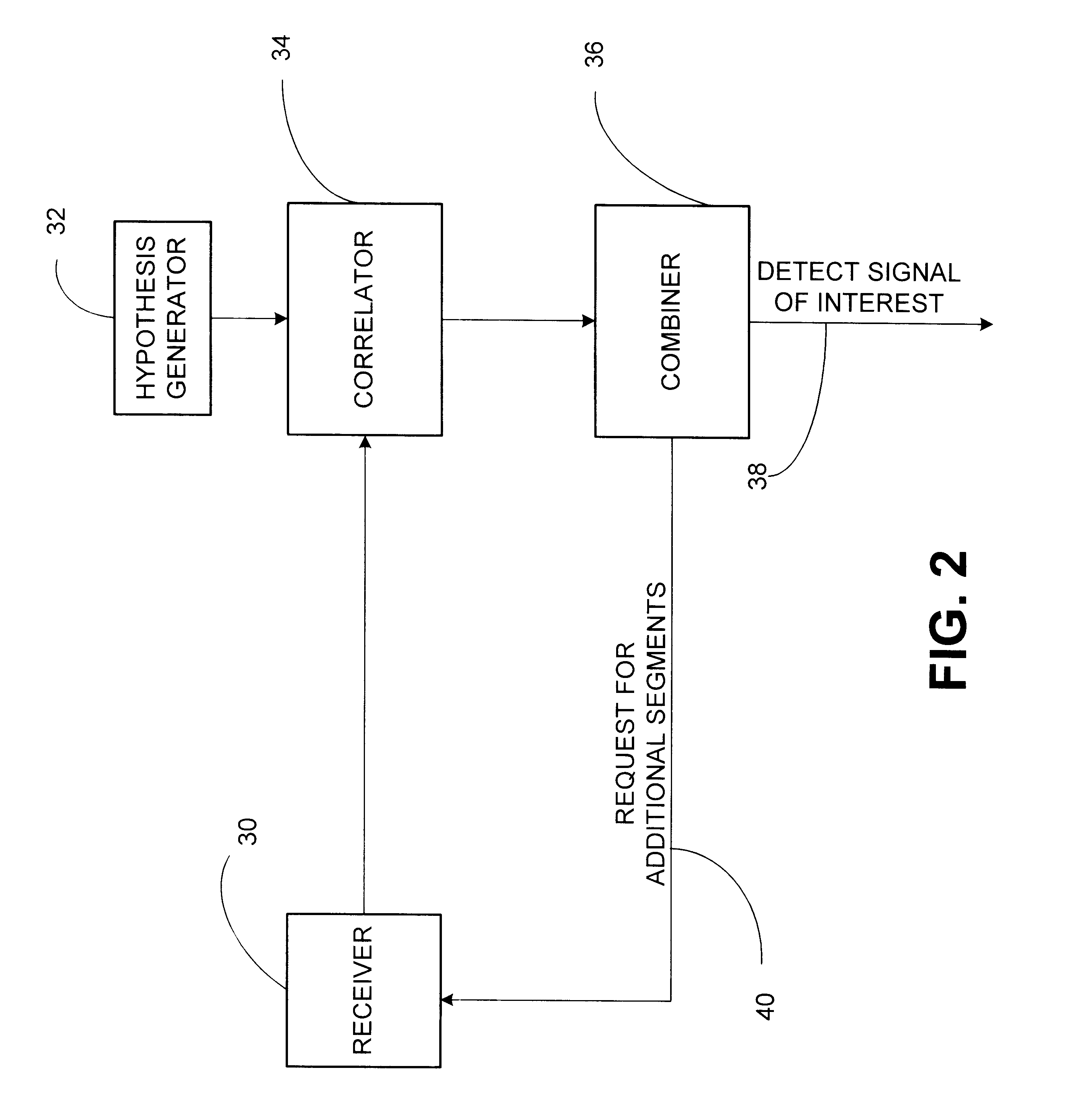Signal detector employing correlation analysis of non-uniform and disjoint sample segments
a signal detector and correlation analysis technology, applied in direction finders, direction finders using radio waves, instruments, etc., can solve the problems of limiting the size and occurrence of the sampling period, the signal to noise ratio of the received signal 20 over a finite sampling window may not be sufficient to detect, and the difficulty of combining segments of samples captured over different periods of tim
- Summary
- Abstract
- Description
- Claims
- Application Information
AI Technical Summary
Problems solved by technology
Method used
Image
Examples
Embodiment Construction
matched filter chip code-named "Magna" which combines the functionality of the sampling circuitry 74, the timing circuitry 76, offset measurement circuit 78, and the matched filter 82 of FIG. 4 has been developed by the assignee of the subject application (Conexant Systems, Inc. of Newport Beach, Calif.). A processor chip which embodies the functionality of the GPS processor 84 of FIG. 4 code-named "Scorpio", Part No. 11577-11, is available from the assignee of the subject application. In one implementation, the processor has additional GPS-specific circuits, such as tracking channels for continuously tracking a number of GPS satellite signals 20 (FIG. 1). Typically, the processor includes at least an embedded microprocessor with an external bus. In one configuration, the processor views the matched filter chip as a memory mapped peripheral. It issues commands to the matched filter chip, and retrieves results after it has completed processing for a given set of commands. An RF recei...
PUM
| Property | Measurement | Unit |
|---|---|---|
| Time | aaaaa | aaaaa |
| Phase | aaaaa | aaaaa |
| Correlation function | aaaaa | aaaaa |
Abstract
Description
Claims
Application Information
 Login to View More
Login to View More - R&D
- Intellectual Property
- Life Sciences
- Materials
- Tech Scout
- Unparalleled Data Quality
- Higher Quality Content
- 60% Fewer Hallucinations
Browse by: Latest US Patents, China's latest patents, Technical Efficacy Thesaurus, Application Domain, Technology Topic, Popular Technical Reports.
© 2025 PatSnap. All rights reserved.Legal|Privacy policy|Modern Slavery Act Transparency Statement|Sitemap|About US| Contact US: help@patsnap.com



